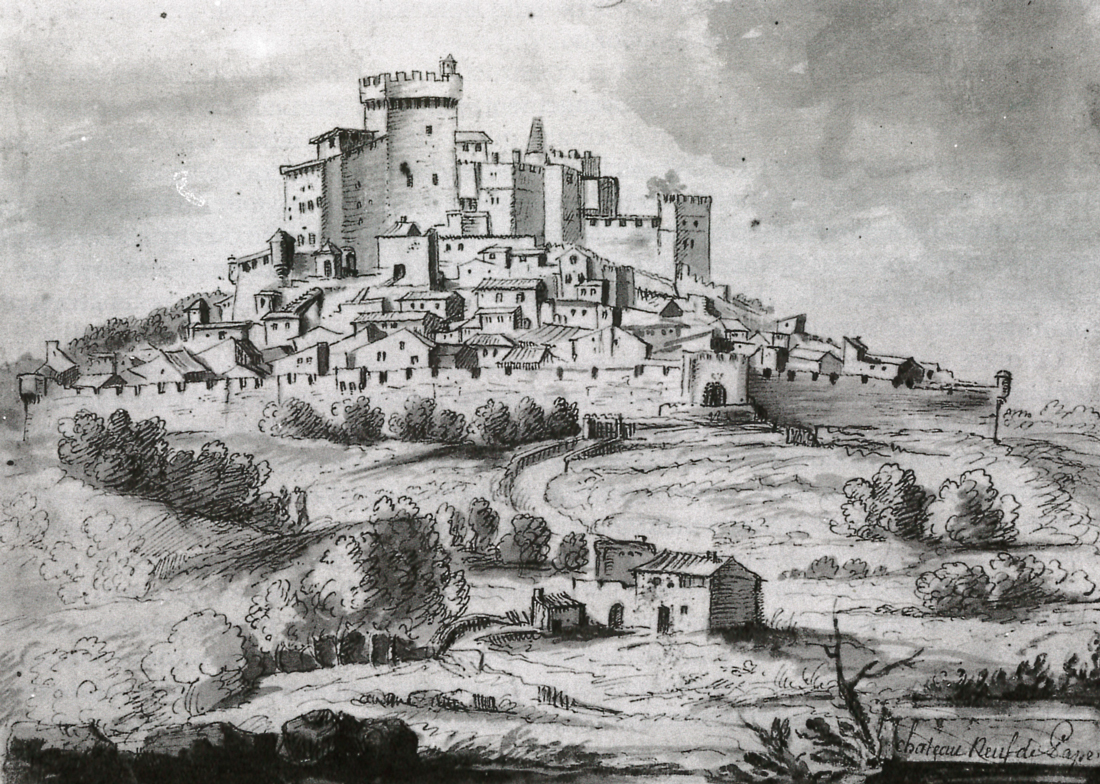- Appellation
Explore the appellation
- Winemakers
- Winetourism
Visit the appellation
- Biodiversity
Explore biodiversitY
It was the Popes, during their residence in Avignon in the 14th century, who unveiled the terroir of Châteauneuf-du-Pape. Under the reign of John XXII, the village became the summer residence of the papacy. As for the nectar crafted in these lands, it ascended to the status of ‘Pope’s Wine.’ A consecration that opened the doors to the great European courts.

During the Gallo-Roman era, vines likely already covered the territory of Châteauneuf-du-Pape. The first written traces of its existence, however, date back to 1157. True to local tradition, planting and managing the estate himself, Geoffroy, the bishop of Avignon, owned a vineyard in his fief of Châteauneuf-du-Pape. But it was the popes who, from the 14th century onwards, were the true promoters of viticulture in the area.

In 1314, Clement V, the first pope of Avignon, discovered the richness of the terroir of Châteauneuf-du-Pape. His successor, John XXII, bestowed upon it its nobility: under his reign, the vineyard truly flourished, extending its fame beyond the borders of the Comtat Venaissin.
He had a powerful fortress built on the heights of the village, which over the years became the summer residence of the popes of Avignon. Above all, he granted the wines produced here the coveted status of ‘Vin du Pape,’ which then graced the renowned table of the Palace of the Popes in Avignon. The annual orders reached up to more than three thousand liters per year. During the festivities held there, it was served to ambassadors and other representatives of foreign courts who were enchanted and, upon their return to their countries, promoted it. Quickly, it was shipped in barrels to Italy, Germany, and Great Britain.
As the first AOC wine in France in 1936, the 3,150 hectares of the appellation extend over 5 communes: Châteauneuf-du-Pape, Bédarrides, Courthézon, Orange, and Sorgues. With 300 harvest declarants, the appellation produces an average of 90,000 hectoliters per vintage, or about 12 million bottles, distributed to 93% for red wines and 7% for white wines. Benefiting from a unique natural heritage, the AOC relies on 13 grape varieties, 5 distinct terroirs, and an exceptional climate, marked by sun and mistral, to produce exceptional wines distributed mainly for export (66% of volumes in 2021). Historically and continuously committed to sustainable development issues, 35% of the AOC’s surfaces are managed in organic or biodynamic agriculture.
BP 12-25 avenue Général de Gaulle
84231 Châteauneuf-du-Pape cedex
© CHÂTEAUNEUF DU PAPE 2023
Alcohol abuse is dangerous for your health, and should be consumed in moderation.